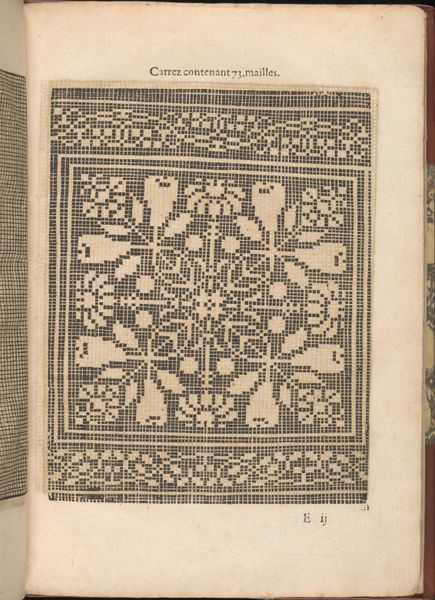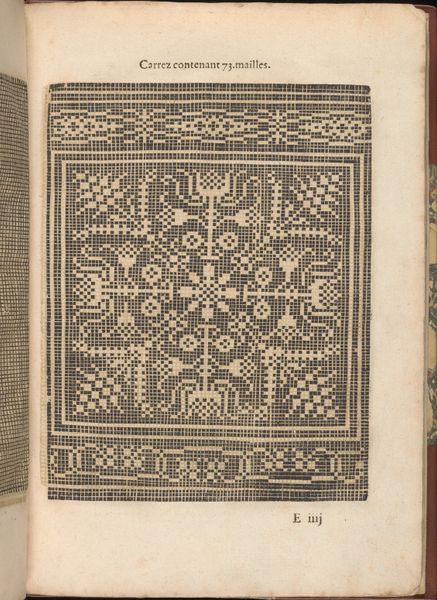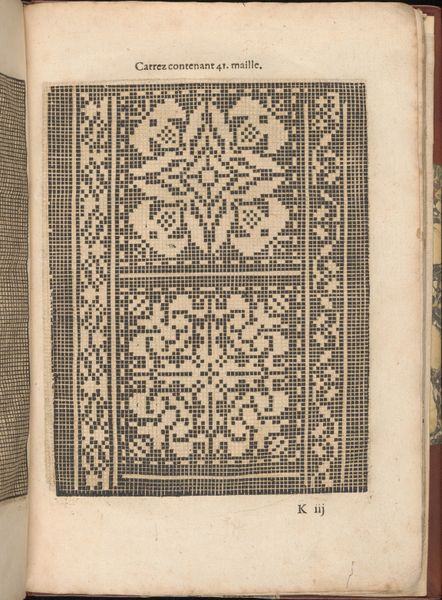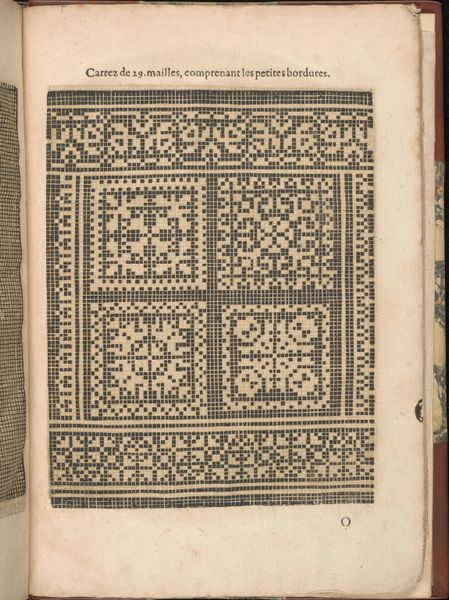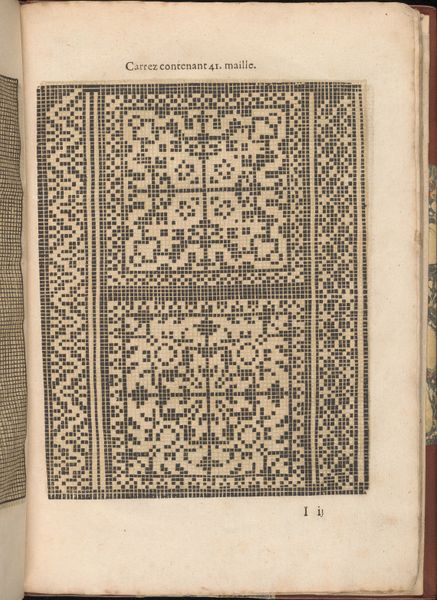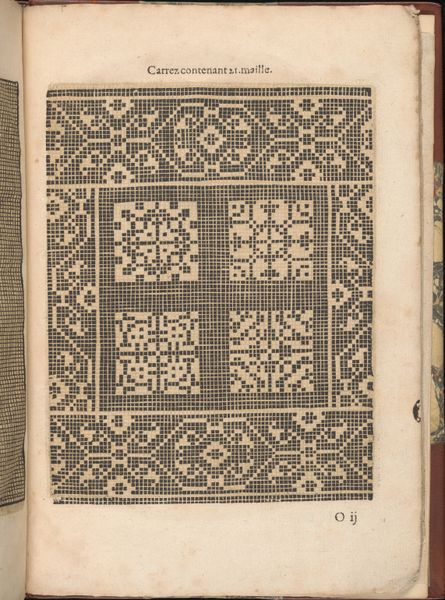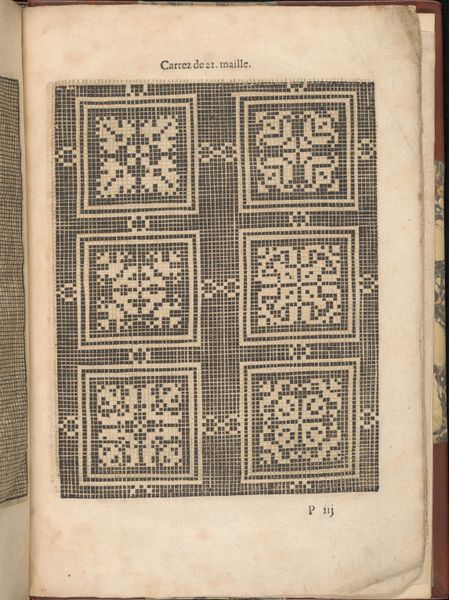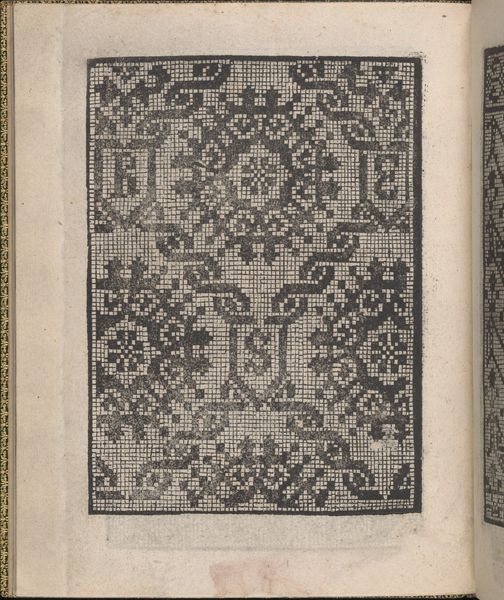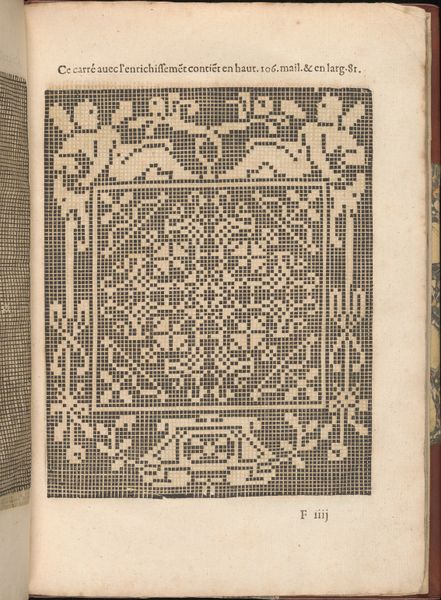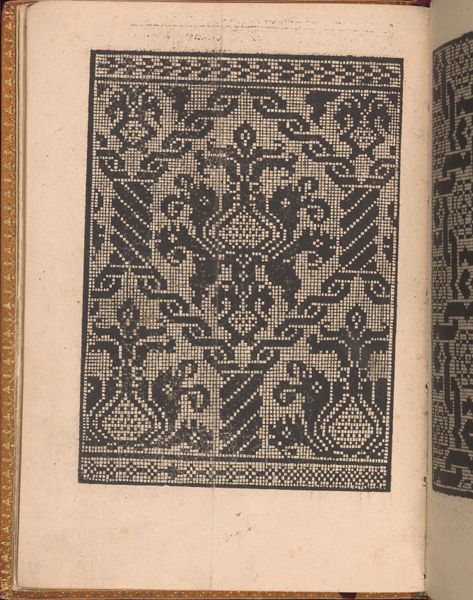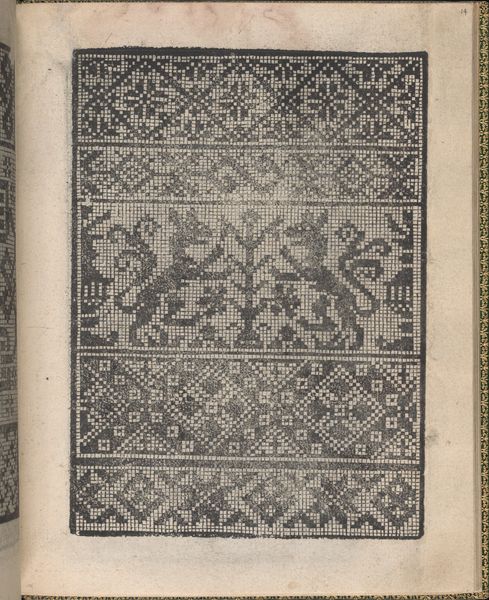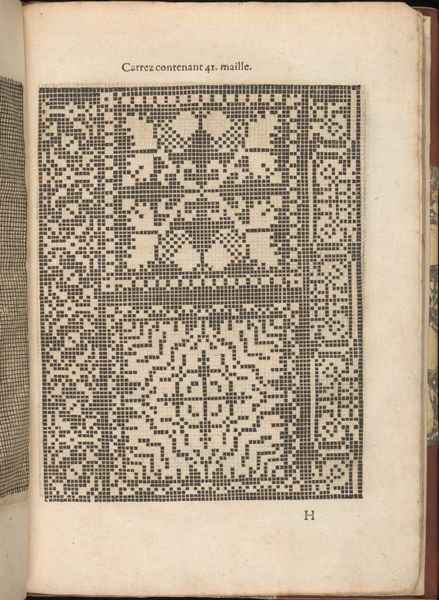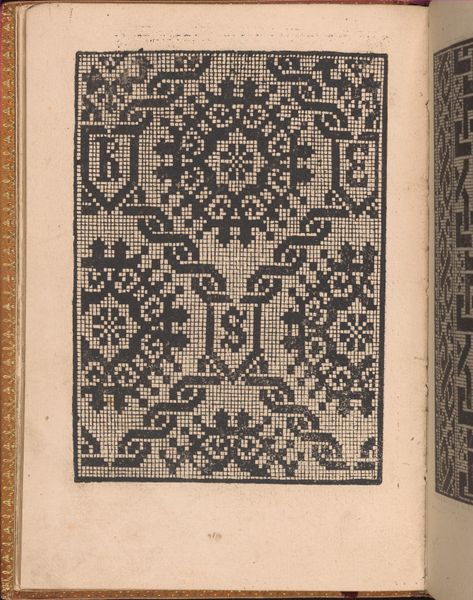
Les Secondes Oeuvres, et Subtiles Inventions De Lingerie du Seigneur Federic de Vinciolo Venitien, page 25 (recto) 1603
0:00
0:00
drawing, print, paper, engraving
#
drawing
# print
#
paper
#
11_renaissance
#
geometric
#
engraving
Dimensions: Overall: 9 7/16 x 6 1/2 in. (24 x 16.5 cm)
Copyright: Public Domain
Editor: Here we have "Les Secondes Oeuvres," a page from a book of lace-making patterns by Federico de Vinciolo, dating to 1603. It’s a detailed engraving, mostly geometric shapes and stylized flowers rendered in this precise, almost pixelated style. What's particularly striking to you about it? Curator: What I find compelling is thinking about this image not just as a pattern, but as a form of coded communication accessible primarily to women. Needlework during the Renaissance was a space for creativity and expression, but also for the transmission of cultural values and social expectations. How might these patterns have reinforced or challenged prevailing norms for women at the time? Editor: So, it's more than just a pretty design? Curator: Exactly. Consider the level of skill and artistry involved. Lace making was laborious, time-consuming, and a marker of status. For women who possessed this skill, could it have provided a form of economic agency, however limited? Did the creation and sharing of patterns create community among women? Editor: I hadn't thought of it that way. It's like a secret language, almost. Were there regional differences or symbolism embedded within the designs themselves? Curator: Absolutely. And think about the male gaze here. Vinciolo is publishing these designs, making them public, yet the actual labor and knowledge resided primarily with women. Whose voices are centered and whose are marginalized in the historical narrative surrounding these works? Editor: That's a great point. I see now how something that appears purely decorative can reveal so much about the lives and roles of women in the Renaissance. Curator: It requires us to critically examine whose stories are told and whose are missing from the official historical record. That careful examination encourages intersectional discussions and inclusive art historical practice.
Comments
No comments
Be the first to comment and join the conversation on the ultimate creative platform.

